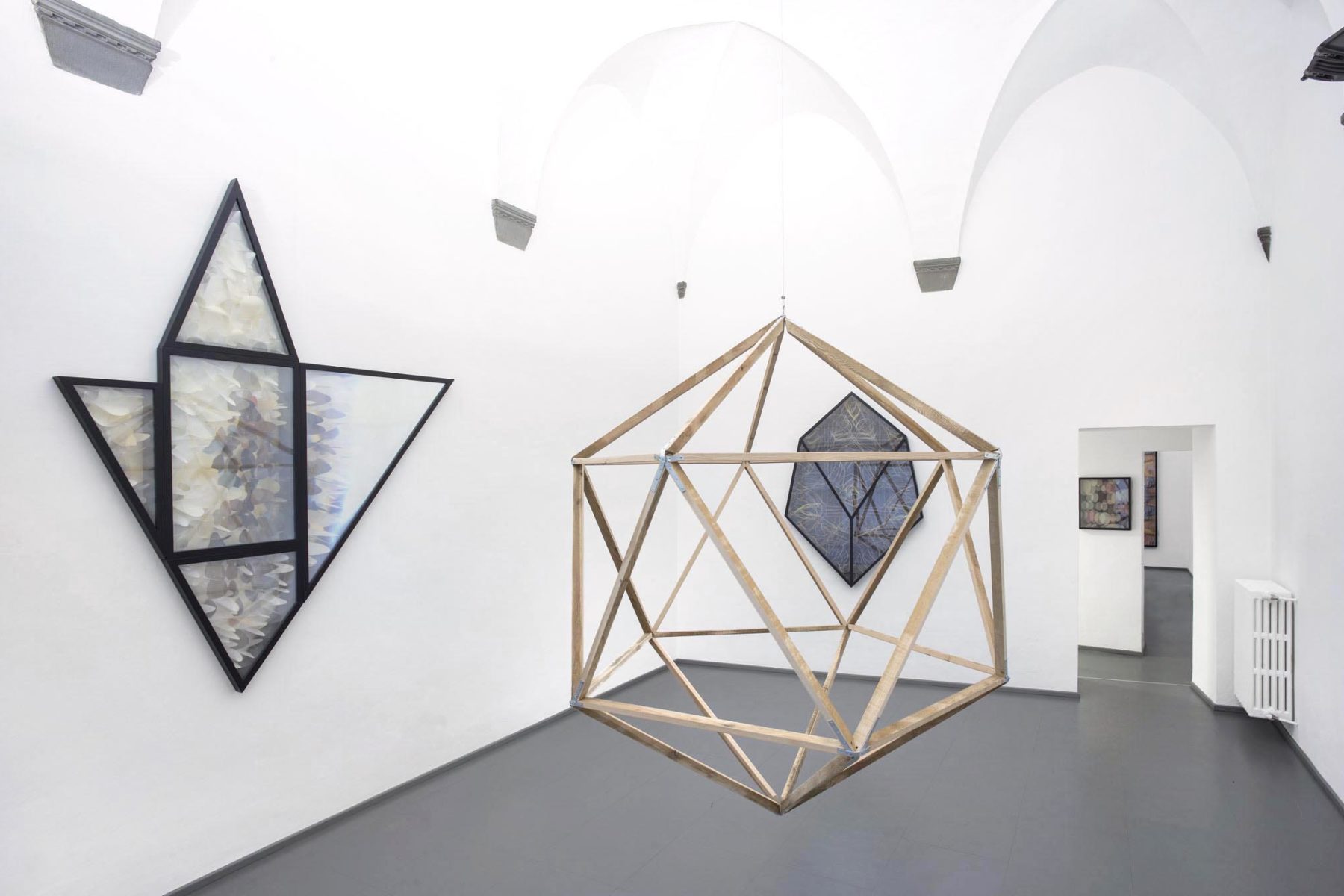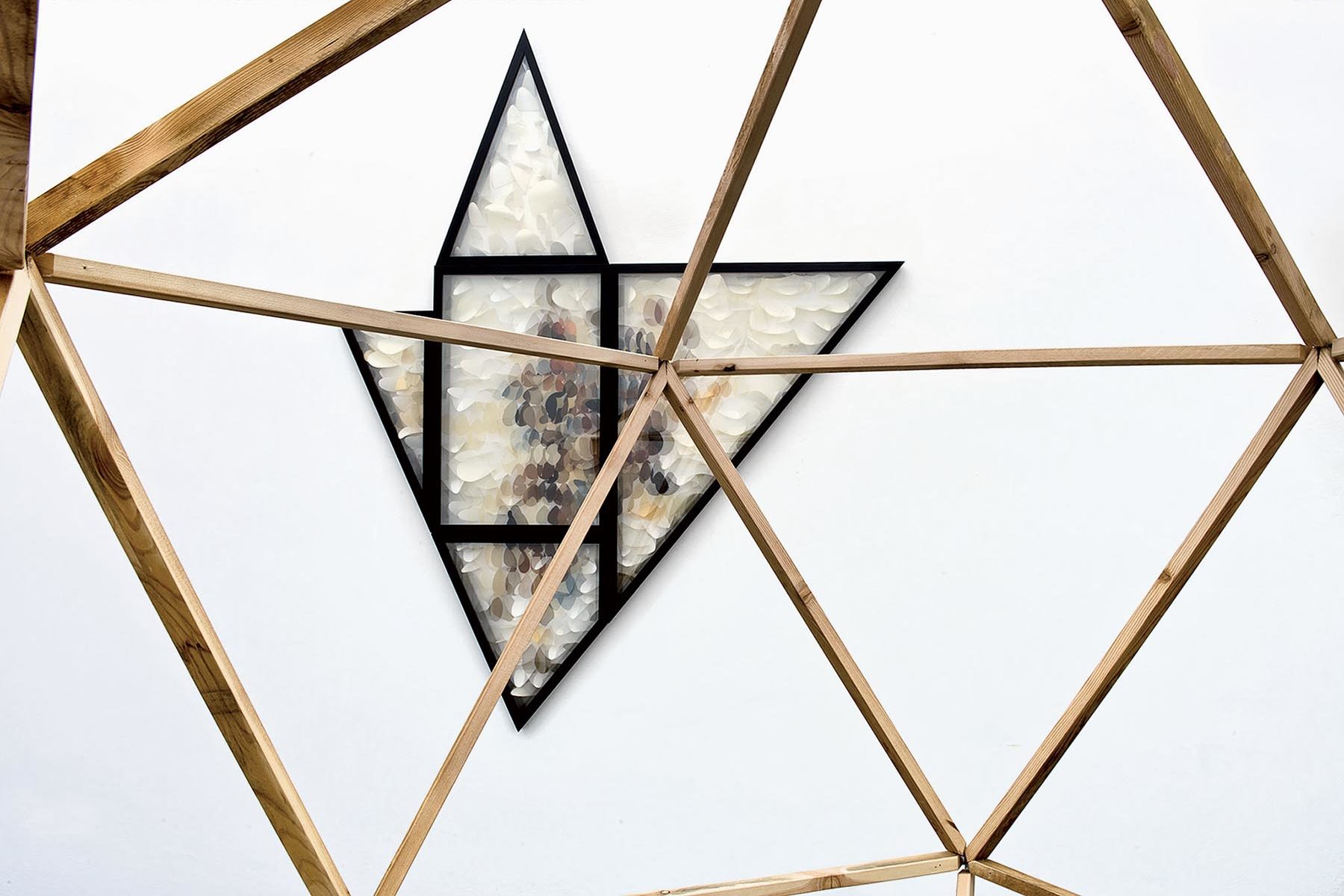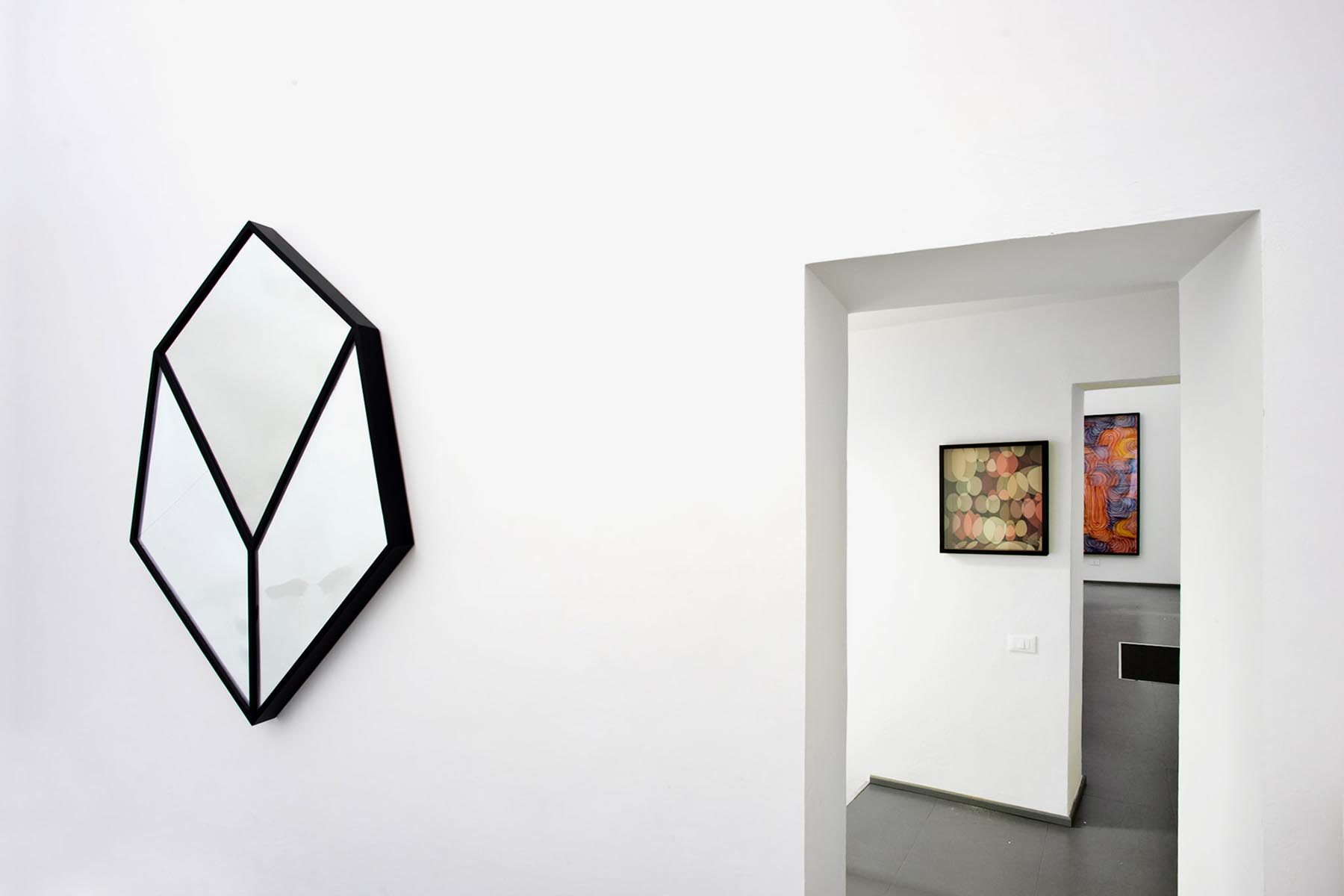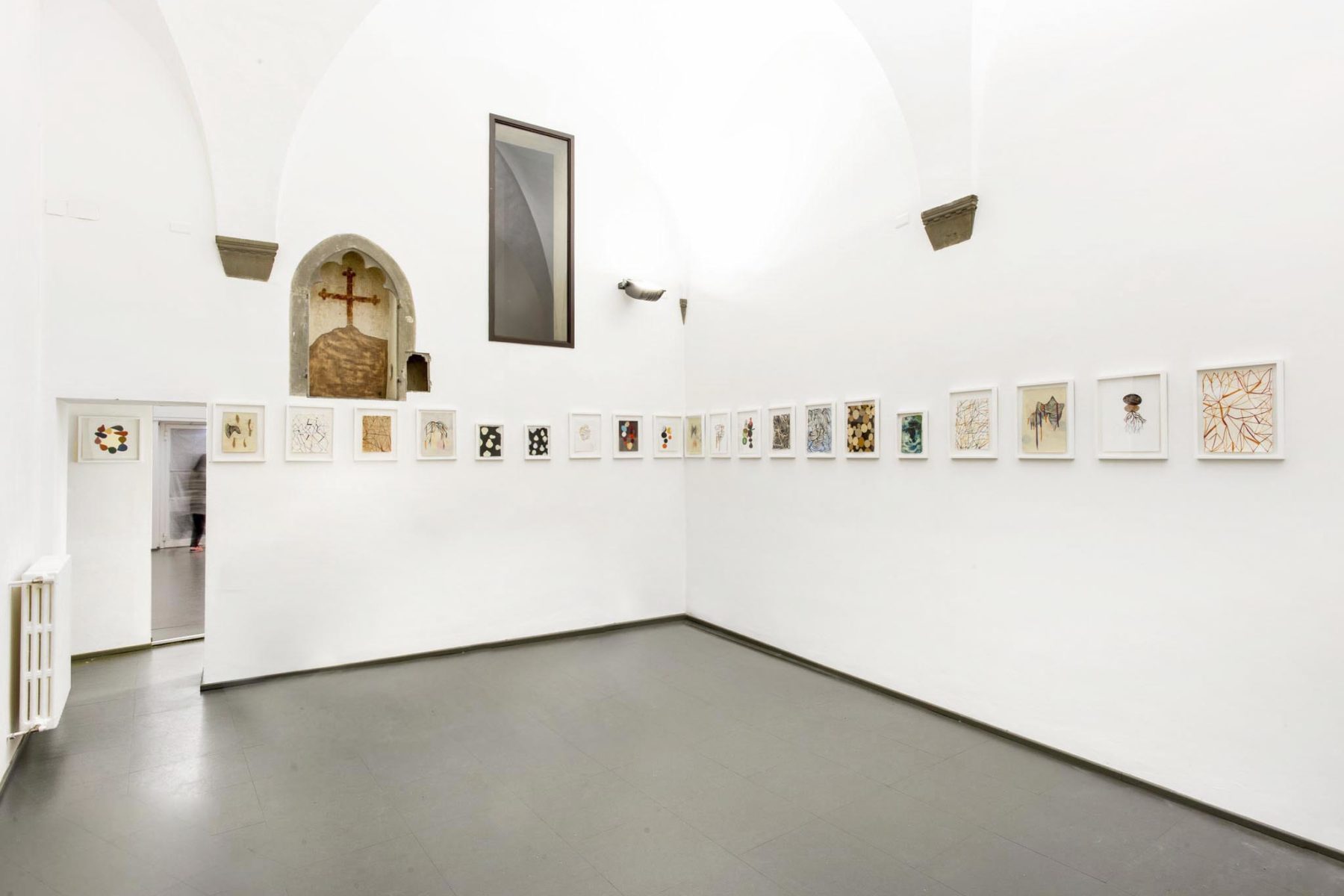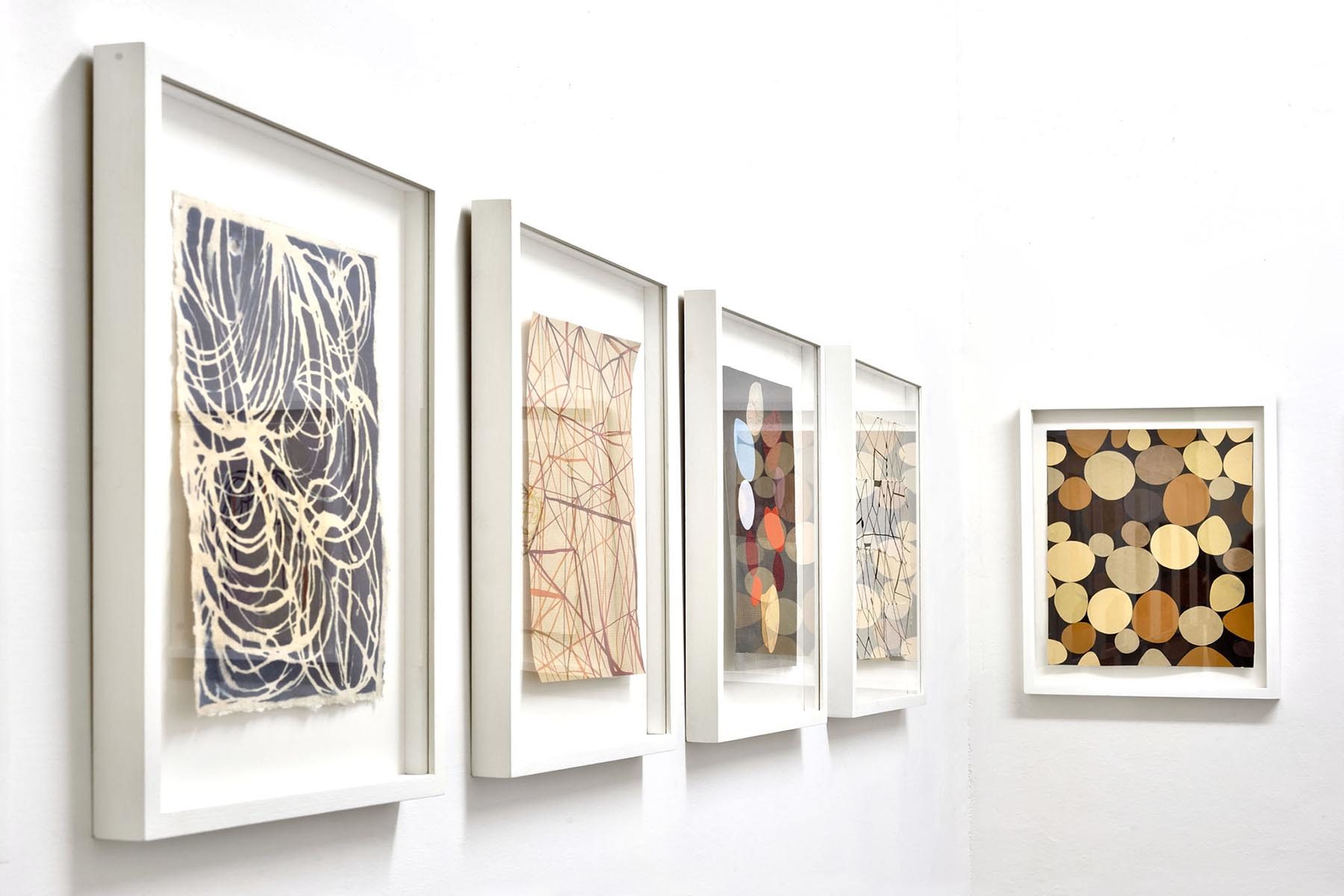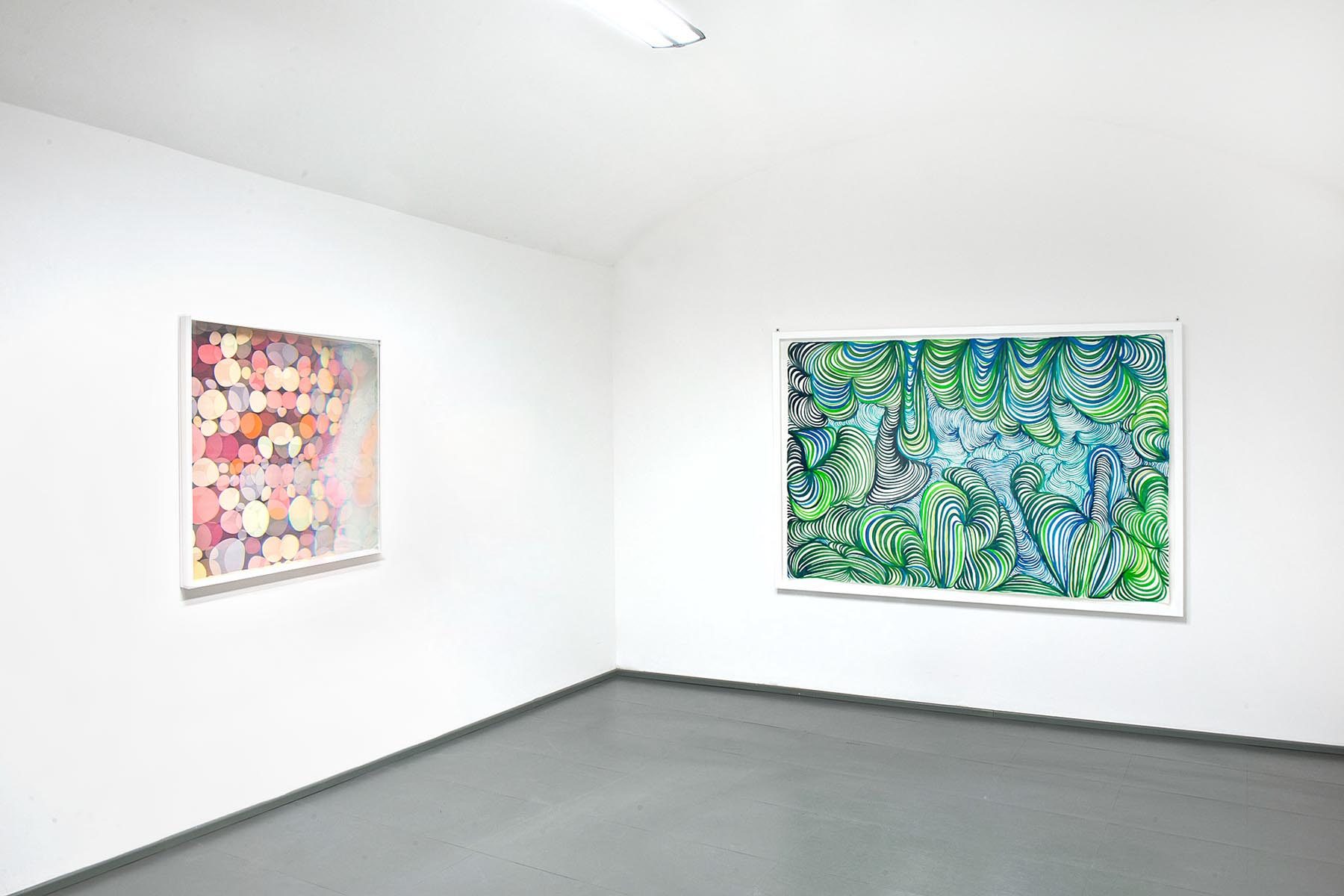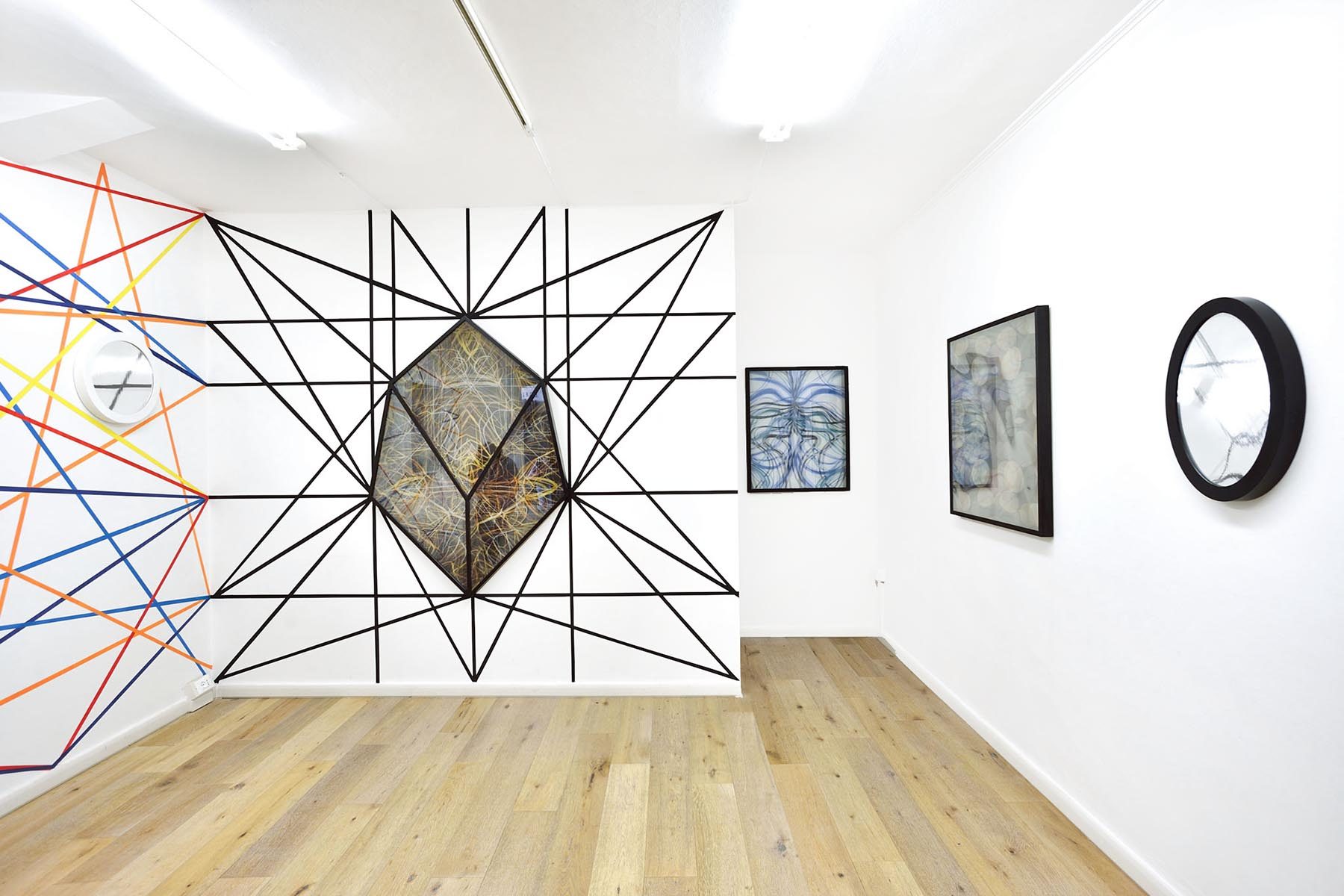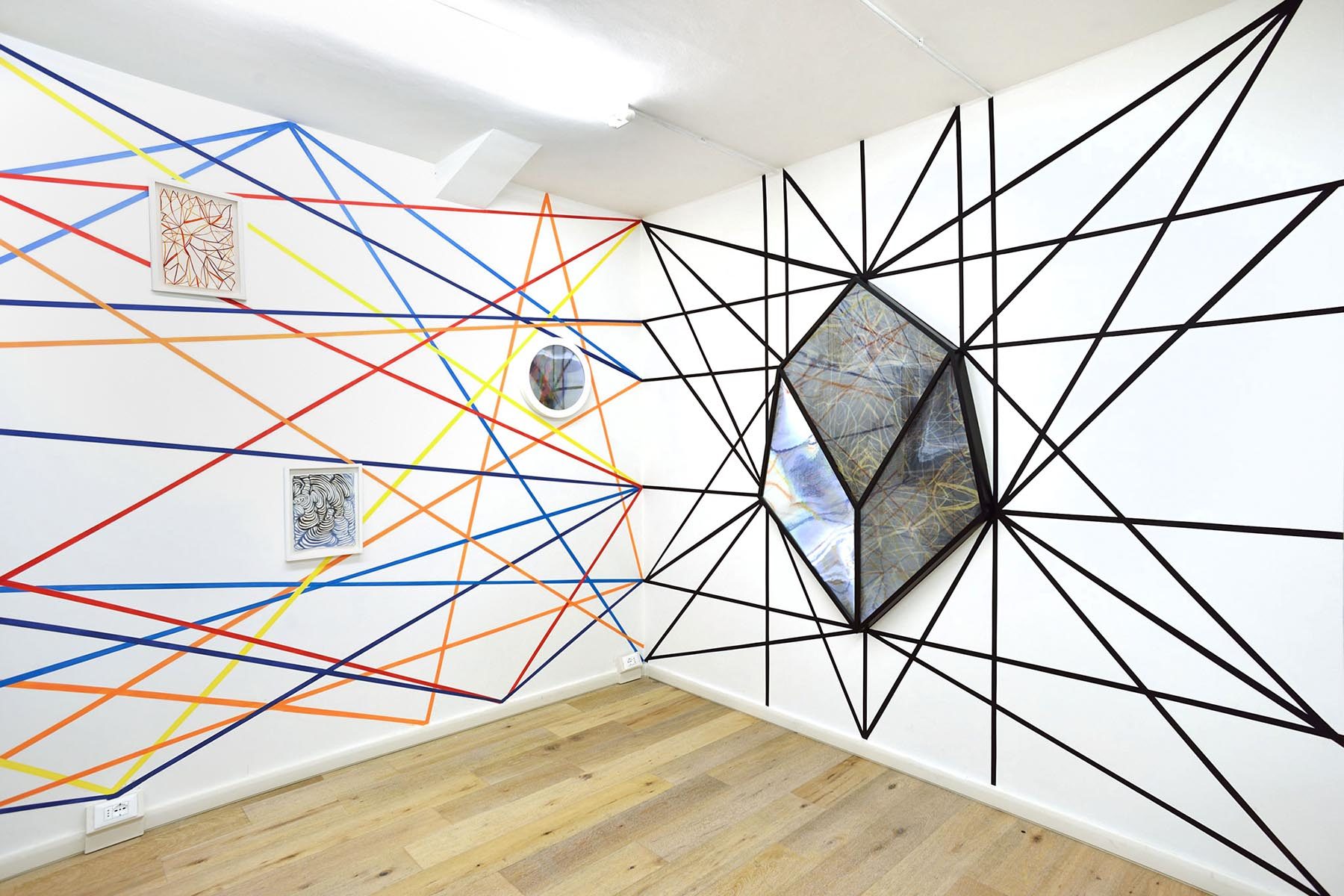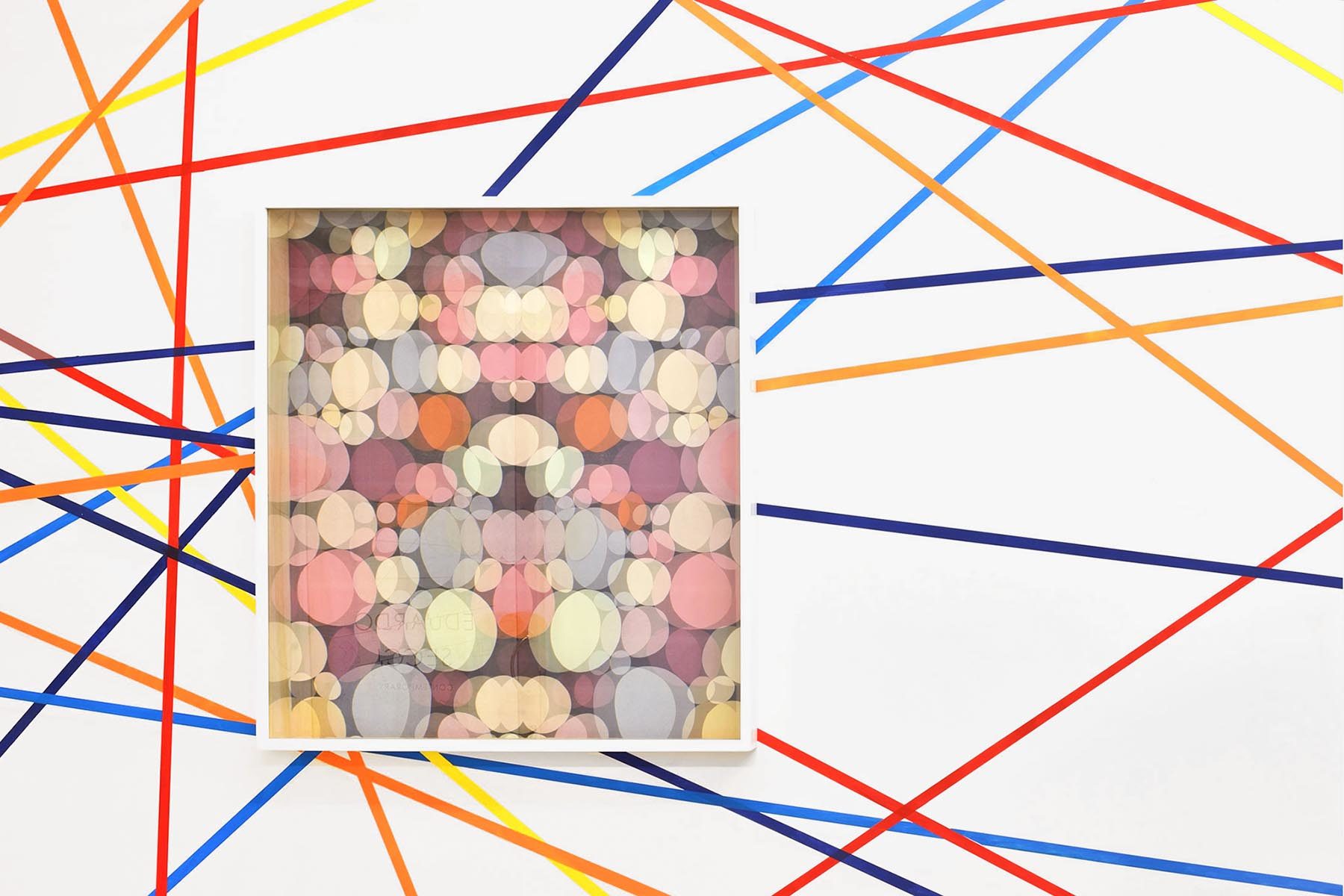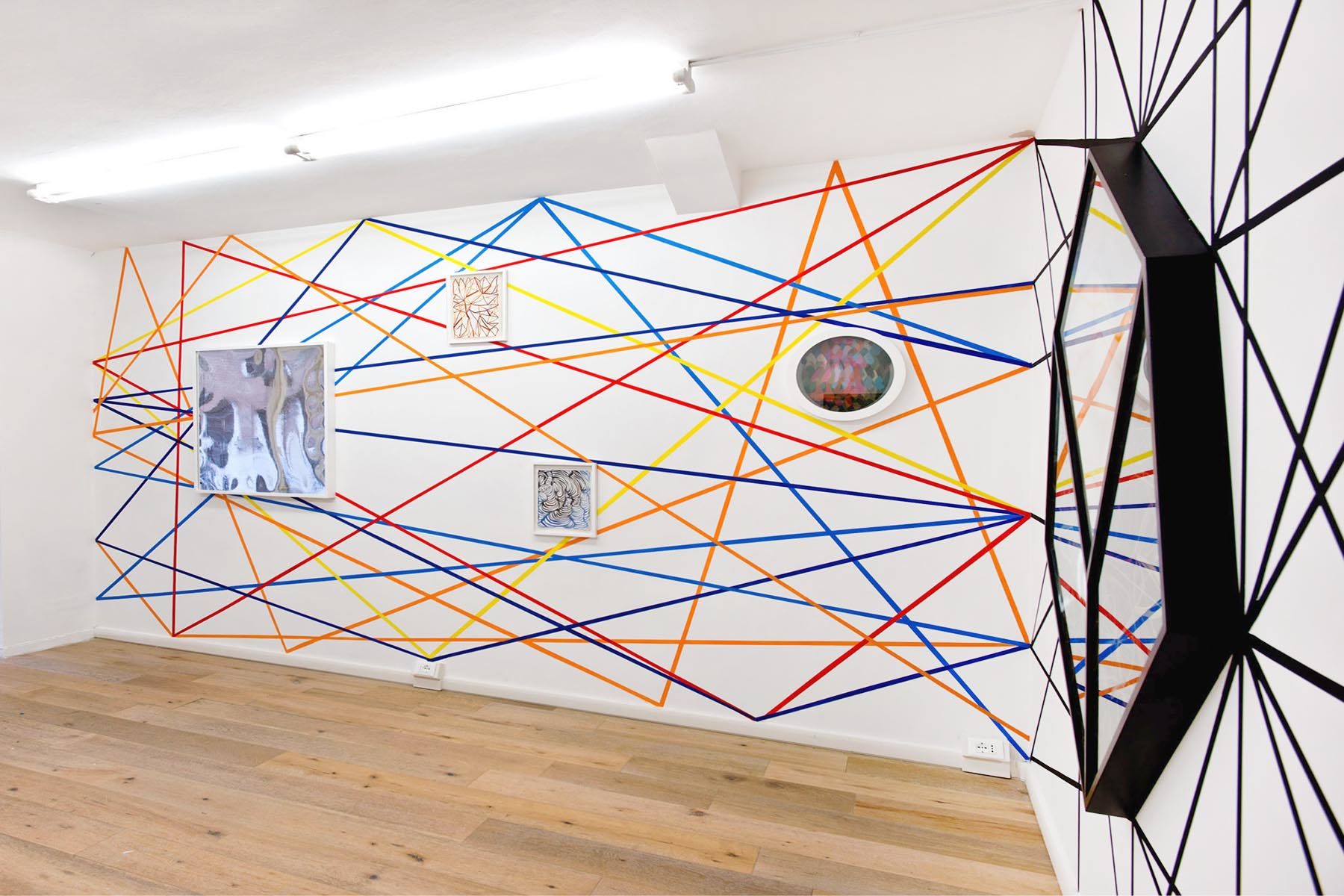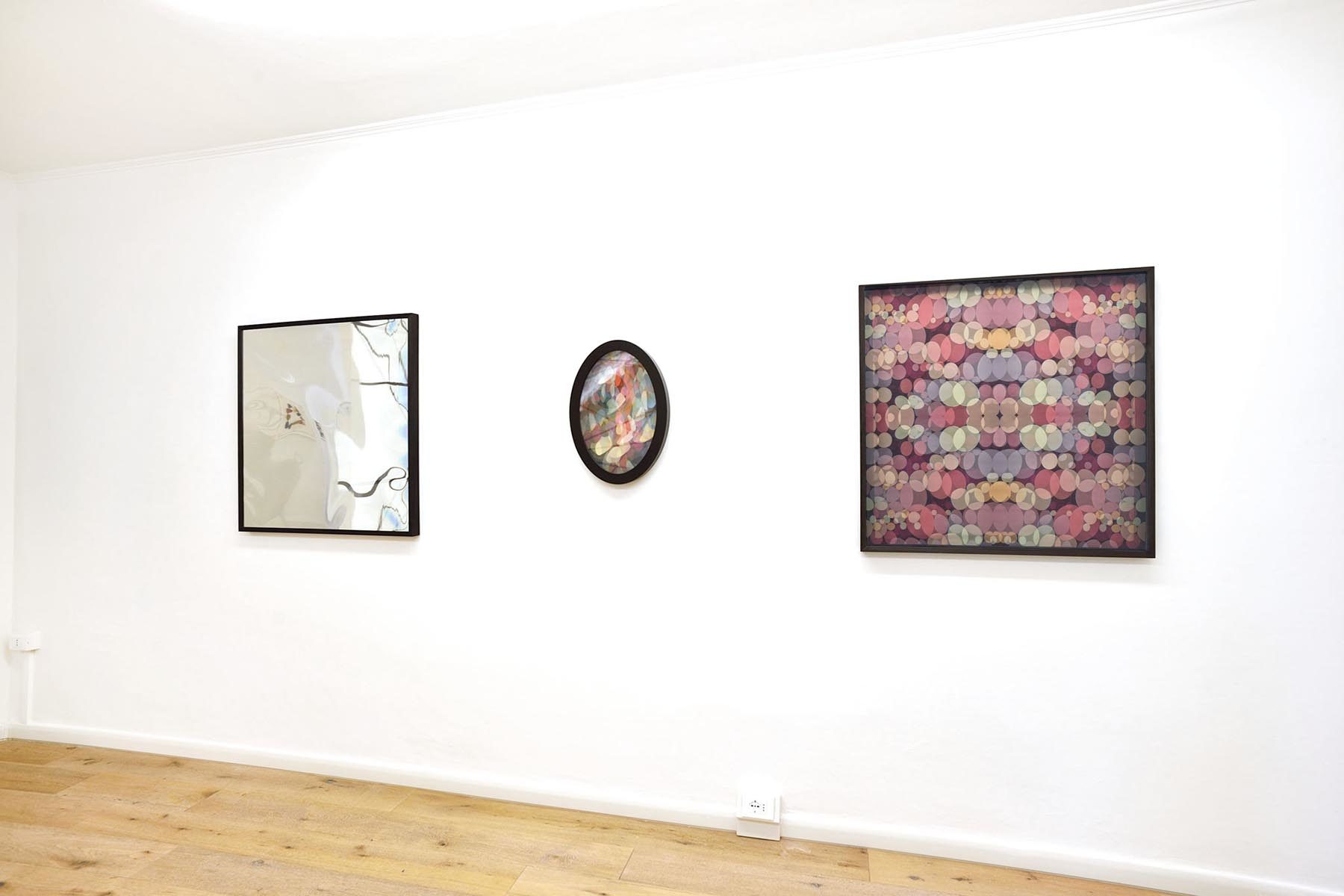Maurizio Donzelli
Diramante
Firenze and Pietrasanta (I), Eduardo Secci Contemporary
March ― Agoust 2015
Questions of Polyphonic Lines
A Conversation with Maurizio Donzelli
conducted by Daniele Capra
Who is Maurizio Donzelli today? Where has your research led you since you began your career in art?
I feel like I am always learning and in training. For this reason, it is almost impossible for me to take a summary look back: my character leads me to regard what may be considered my past errors regretfully. I always prefer looking ahead, to the future, but at times I would like to be able to correct many of my works – as did Pierre Bonnard, who, when the museum custodian turned his back, broke out his colors and retouched his own paintings. It’s like living in a never-ending present; not accepting, perhaps, the historic sense of life. This is a cultural construction we are forced to accept in any case, for obvious reasons, but maybe, in our innermost selves, we do not always perceive it as being all that real. But I’m not evading your question: I realize that over the years, piece by piece, I have eliminated every possible link with actual things in terms of formal recognizability. For example, my drawings of trees, animals, people, objects, etc., are no longer mimetic. But on the other hand, I have never even thought of approaching abstraction as an end in itself: I have always thought that I draw sorts of analogies with the objects of the world in my works. My belief that an image that leaves itself open to interpretation is more profound, more fertile than one that doesn’t, has grown with time.
At this post-modern juncture, we still live in the prison of the representation/abstraction dichotomy, which manifests in the two extremes of figuration and of the aniconic subject, image categories that are still fully 20th-century in character. How can we get out from under this sword of Damocles?
In order to begin to relate to images it is first necessary to abandon any characterization, any elements of natural recognizability, even little clues. We must sense the euphoria the images suggest to us – and to so relate to them, a certain measure of passivity and silence is required. I would stress the importance and the sense of difference inherent in this way of thinking, because if the drawing is drawing of the utterance, its accomplished sense is proper to its language and is indissolubly inked to the concept. But the concept is only one aspect of the image; and it is reductive and prosaic.
Earlier, you spoke of wanting to change your works as Bonnard did. This would seem to indicate that you experience some difficulty inletting go of a work, of abandoning it to the world as matter intimately processed and then fully and happily “defecated.” It is as though, mentally, you need to obsessively assert control over your work, to program its adaptation, to update it as your personal interests and demands change.
Control and loss of control. On the one hand, the desire to build according to what I know how to do, what I have already done, my recollection of my identity. On the other, Dionysius: the snag, the road never yet taken, where although I may lose myself there appears to me the new, that which I do not know about myself. These are the opposite faces of individual identity. In the light of the new material extracted, one can renew oneself: it is that novelty that distances me from my prior experiences.
But such an approach would seem to almost negate the idea of progression in the research carried out by an artist. It would be like doing the same job over and over again, in simple chronological juxtaposition.
Though I wouldn’t want to appear overly one-sided, I do believe that the work of art and the thought that surrounds it have a phenomenological function, in which the thought finally can become incarnate in the corporeal, physical aspect of form and not remain exiled in the algid, solitary reaches of the spirit. For this reason I feel that I am connected to the natural/cosmological world, to its relationships and branchings. I feel I also am a part of it, a part that continually develops and experiments with its own dialectical relationship. Looking at it this way, I believe I do always carry the same work.
Among the constituents of your work, the line is central. As Kandinsky explained, it is one of the minimal units of meaning. In your case, the line is a fundamental element of a grammar characterized by unlimited declinations and continual permutations. When did you start working on it so intensely, so obsessively.
I have often written and spoken about my preference for drawing. The fundamental element of the drawing is the line. But it seems to me too restrictive to speak of sign and line in these terms. We inevitably end up singling out technical issues, competencies, skills. First of all, the sign is much more than a technical manifestation: it is almost a state, in the sense of a complex perceptual system: a grammar of accents and aptitudes. Maybe that’s why you speak of continual permutations: hovering around the line/sign you find innumerable hands that have already “de-signed.” What’s more, it’s wrong to think that all the faculties we have reside solely within us alone: the image is not only individual; it has a life of its own; it is fluid, and we constantly draw from it. I learned this reading Jung and Hillman, but then I was already ready to embrace such an explosive thought. The draftsman requires no technique, no knack. The draftsman only needs to establish a relationship with his vision, a sort of syntony between himself and things, and keep it tuned.
What contents interest you and attract your attention?
I must confess that I find few in the visual arts, and many in study and in-depth examination of psychoanalytic themes. I see extraordinary flashes of light in Jung’s thought. And I thoroughly enjoy immersing myself in the works of James Hillman, Thomas Moore, Luigi Zoja, or that extraordinary philosopher Henry Corbin. Many suggestions from these authors help me to readjust my vision of art and, more in general, to hone a line of thought on art. But I want to stress that it is only in the image that the deepest mystery can lie, since language, being too rational, perforce gives rise to a communicative condition – because it has a functional purpose.
Do you mean to say that your practice of art arises outside of your thought about it?
No, that’s not what I meant to say. I meant that if there exists a specific artistic language, it passes through the images that are proposed. The authors I cited, while not artists, explore themes linked to the image in great depth; on the contrary, unfortunately. artists have not produced as much. An image is weak when it is replaced by a concept; it is very weak or almost inexistent when it belongs to, serves communication. I am not the only person to believe that, differently from how we are wont to think, ours is not the “society of the image” but rather an iconophobic society. Because it does not recognize the value to the imagination and importance of the link it creates with the world; it does not consider its creationistic aspect.
Do you believe that artists are in part responsible for this situation?
If, on the one hand, I have seen some very interesting artists, on the other I am struck by the banality and the conformist bent of many works of art which are frequently celebrated as important and paradigmatic by that all-pervasive communication which, by standing in for content, has succeeded in taking over significant spaces. But, everything considered, I am not all that surprised: these are symptoms of the deep-seated ills that affect our society.
And at this point, I seem to instead understand that your research is the effect of an Other of an essentially psychoanalytic nature…
As concerns the Other, I would say that there is nothing that isn’t intimately linkable to the psyche. Psychoanalytic thought did not start with Freud and Jung; it goes much further back in time. It starts with Plato, with the great Stoic philosophers, with Marsilio Ficino, with Giordano Bruno, with the texts of the mystics; and we find it in every religion. I am not drawn to any school of psychoanalytic therapy and I have little interest in psychoanalysis, which stresses practical applications. You speak of an Other; I am in agreement: the Other and curiosity are most certainly the two centers of interest of my spirit. And the word “psychology” means “discourse on the psyche,” the spirit or the soul.
If we take them a step further, your words would suggest that you understand your works as the effect of a shift, of a translation, at least in the literal sense of “moving from one place to another.” It is as though your work were the effect of a transposition, of a transference of a mentally-generated emotion. That is, the epiphany of that Other without a topology. The manifestation and the materialization of Plato’s ideas.
In 2005, I entitled my exhibition at the Calcografia Nazionale of Rome Lo Spettacolo di Niente. The title cites French philosopher Maurice Merleau-Ponty’s “spectacle of nothing” to which he refers when he says that the painter/author is born through his works, since the world is not in front of him as a representation but it is auto-figurative, a “spectacle of something”: a possible revelation, but only on condition that this “some thing” be a “nothing,” a “skin of things.” Somewhat as you say, a translation – where, however, the revelation is not literal but remains a subtle indication, a leaning. Earlier, I mentioned the enigma of the image. The words “image,” “imagination,” and “imaginary” are terms which with time have lost much of their extraordinary power. They are words we have marginalized with respect to the literalism and arid realism in which we are immersed on a daily basis; to the poison produced by distorted readings of reality. A poison which is fed to us every day.
This, I suppose, is one of the effects of the manipulation we suffer at the hand of the consumeristic system…
The imagination is no longer our principal resource for building the world, since the persuasive force of images is channeled toward establishing literal contact with objects and things. This one-way contact serves only to milk and exploit that which is around us: there is no relational principle involved. Thus the imagination – or, if you prefer, art itself – is frequently considered entertainment or, worse, an escape, a centrifugal force. Contrariwise, we should consider it central, centripetal, and costitutive of reality.
Much of your work draws on the binomial perception/beauty. The former element arises from the observer’s shift with respect to the work as a physical subject. The latter from the search for an absolute eurhythmic beauty which exists independently of the work. And which, paradoxically, does not need even the eyes of the observer, just as harmony in music already lives in the written pages of the score, even before their notes are played.
Ideas, like gestures, are always the same. They have never changed as far as their substance goes; theirs is an immutable heart. I have verified, in part in light of what we said earlier, that images are often “brought” to me… it is difficult to describe in words; it is a thought that can only be grasped, not transmitted or demonstrated. If harmony exists before, it is clear that when it appears, for example on the score, it has only chosen that specific instrument to exist; simply chosen a suitable, functional vehicle.
Don’t you think that the research into form and harmony you conduct may become a trap that will imprison you? A shift toward formalism?
I look for something that is not in myself alone and, consequently, can in some measure be shared by others’ vision. Sometimes I even think that someone else could understand it better than I; exemplary, in this sense, is my work with the Mirrors or with the Disegni del Quasi. Feeling as I do this great freedom, I fail to consider the issue of formalism – even though I understand why you asked the question. I ignore it because it is the “necessary image” that has its own will to exist. On the other hand, many of my works are not conclusive; they always allude to a previous or a successive work: they cannot be pinned down at a given punctum, because they slip the ones into the others. I like how they suggest and allude to vegetational – or if you prefer, vegetative – variation, where the constant of a repetitive flux is the essential component.
From this point of view, your works draw on a complexity characterized by repetitions, variations, imitations. Your drawing carries within it the complexity of polyphony, of lines that speak by counterpoint, moving spatially along paths that are only apparently free or random. As happens in music with the fugue, which thoroughly explores the generative potentials of a theme.
The variation and the fugue generate concatenations of sounds that start from a simple generating line to construct marvelous acoustic labyrinths by means of continual contrapuntal flows and motifs. But the theme of resonance, of resonant effects, is much older and rooted in the original foundations of sound, as Marius Schneider explains in his lovely book Singende Steine (Singing Stones). And the note and the ensuing silence are the pure, elementary vibratory experience: they seem to follow a method to which nature itself points, a method we find in chemistry, in mathematics, in fractals. A method we can discern, for example, in popular descriptions of quantum physics. I, personally, am completely uninterested in 19th-century emotional pathos and its need have recourse to narrative and descriptive elements to satisfy the tastes of a public.
You would seem to be more attracted by the constructive and combinatory potentials that reside in music or scientific thought…
I have always enjoyed using modules, patterns, which I sometimes show and other times conceal by various expedients. I am enamored of the ornamental themes and the repetitive sequences of decoration, which seem to me to be sublime constructions – or, if you prefer, ongoing allusions – unencumbered by the ingenuous obligation to provide a recognizability mimetic of objects. I recently discovered the palindromic matrix, in which the line of the drawing is mirrored two or four times. I thus obtain variations which, starting from a detail, almost automatically produce a new form. In this manner, I feel like I am digging even deeper into the image while leaving it its independence.
Are you saying that the image is independent of us, or self-sufficient? What is its nature?
Very often, similarities of a geometric nature allow us to intuit – perhaps only for an illuminated instant – that the image is not invented by man. It reveals itself to man through every sort of linguistic solidification – musical, pictorial –and above all, through the imagination. The realm of images bows to the authority of perception, but only because by so doing it can exist autonomously and reveal itself to us, making itself understood and sharing with us that universal of which we are part.
Do there exist problematic elements that your works point up or refer to the attention of the observer? What do they aim at? At beauty? At wonder, amazement? At a therapy through retinal or perceptive action?
Beauty, wonder, perception. Something of each of these, if the heart of the prompting is the beautiful. Beauty is the true, the one taboo theme, despoiled for marketing purposes, ridiculed and marginalized or otherwise narcotized by the sciolistic principles of aesthetics we study at school. Sensibility to beauty does not lie in the subjectivism underlying “de gustibus non disputandum est” and neither does it lie in the area in which I could better place myself, that of conceptual formalism with the presumptive objectivity of proportion, of the canon, of Gestalt and all the rest. Beauty is splendor and surprise, that beat your heart skips, that utterly spontaneous “Oh, look!” Beauty resides in pleasure, in the immediacy of a thing, and for this reason it is first of all decoration, surface – and above all, ornament. Beauty is at the center of the living world, it is the frisson of pure exhibition and it must be captured and perceived without symbolic or conceptual intermediations, which, as Wittgenstein teaches us, so often tumble into the mechanisms of language. Its enigma can reveal to us our condition as living beings, because beauty does not lie in the light of the thing observed but in our capacity to grasp it, in our inclination to discover it and to look for it even there where, apparently, it has no business being. Deeper down and further afield, it leads us into sacred territory, or, as Hillman, Ficino, and Botticelli would say, into revelation and to the nudity of Aphrodite rising from the sea foam.
